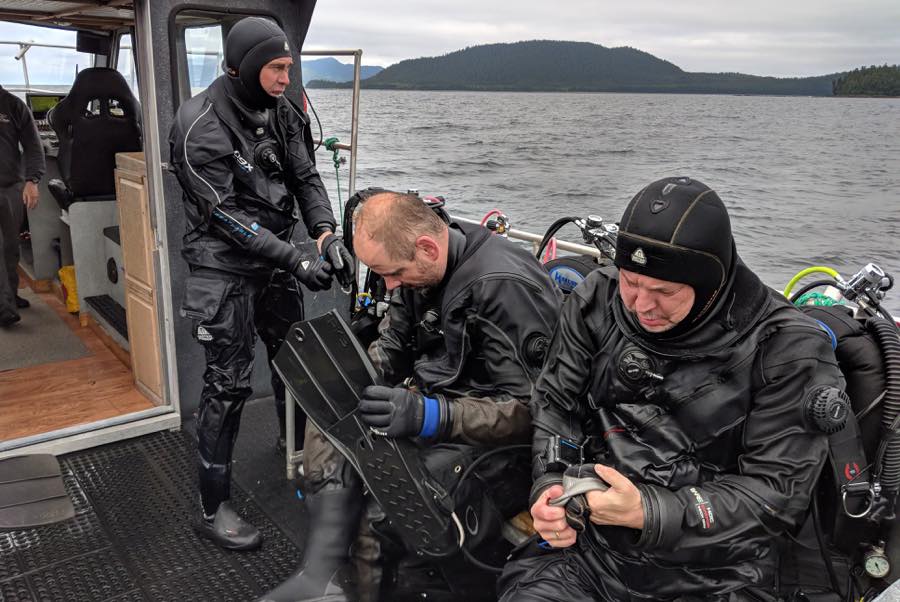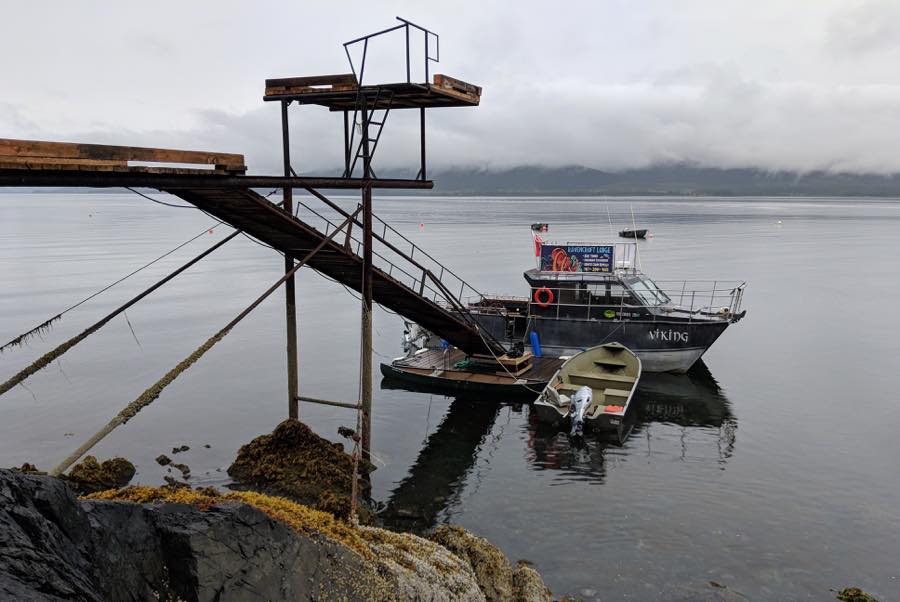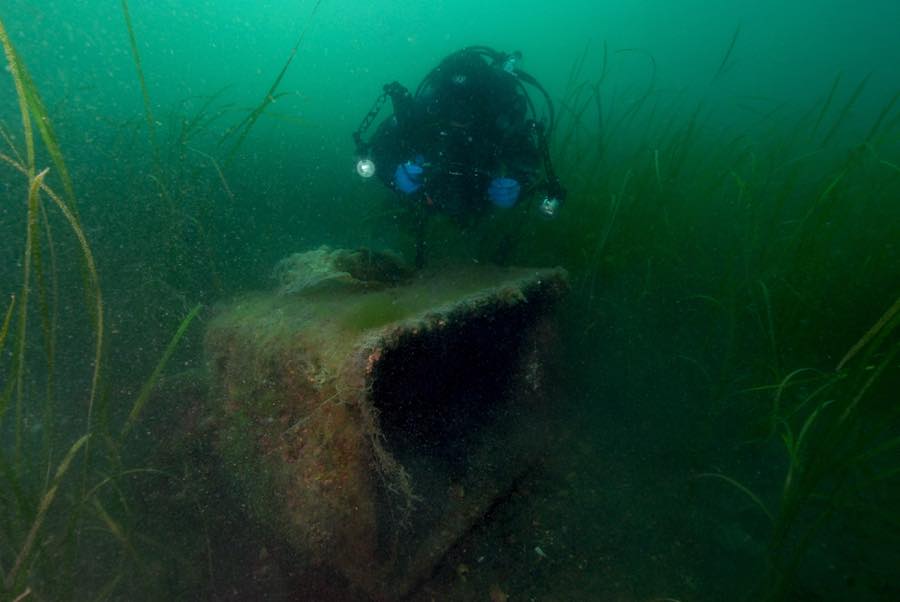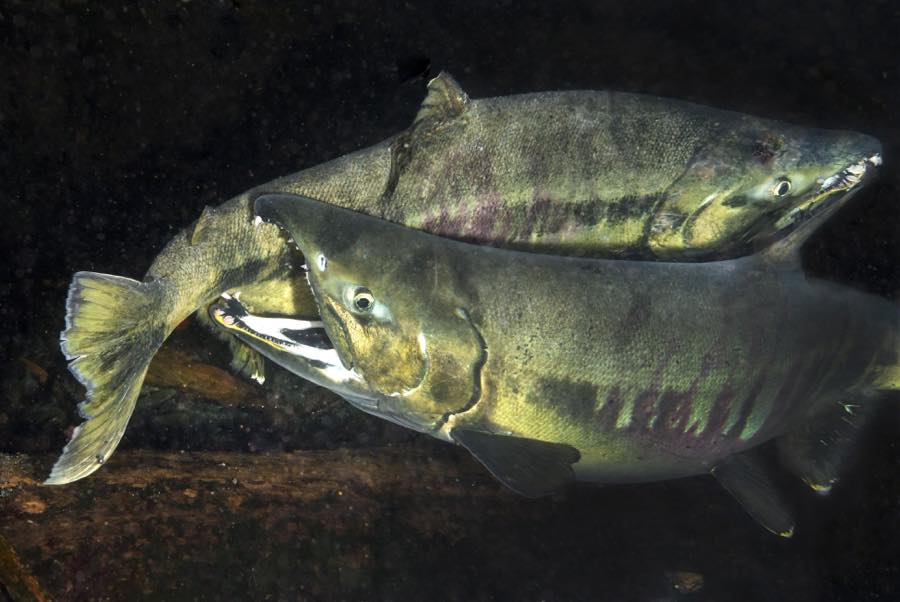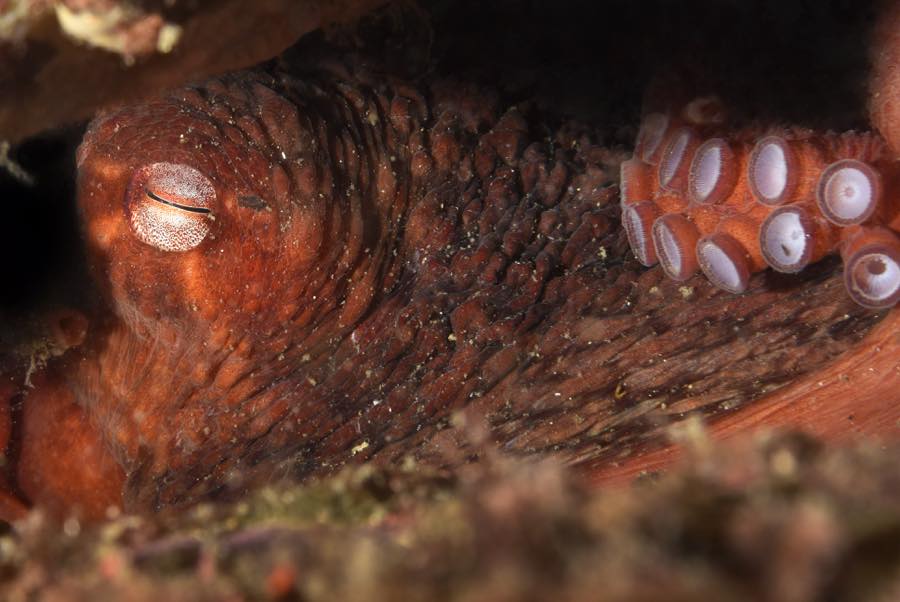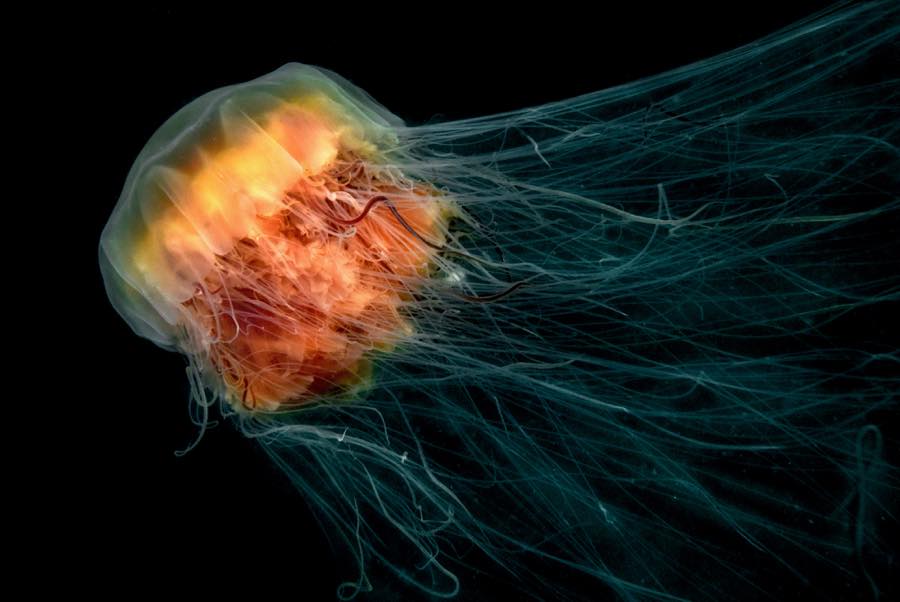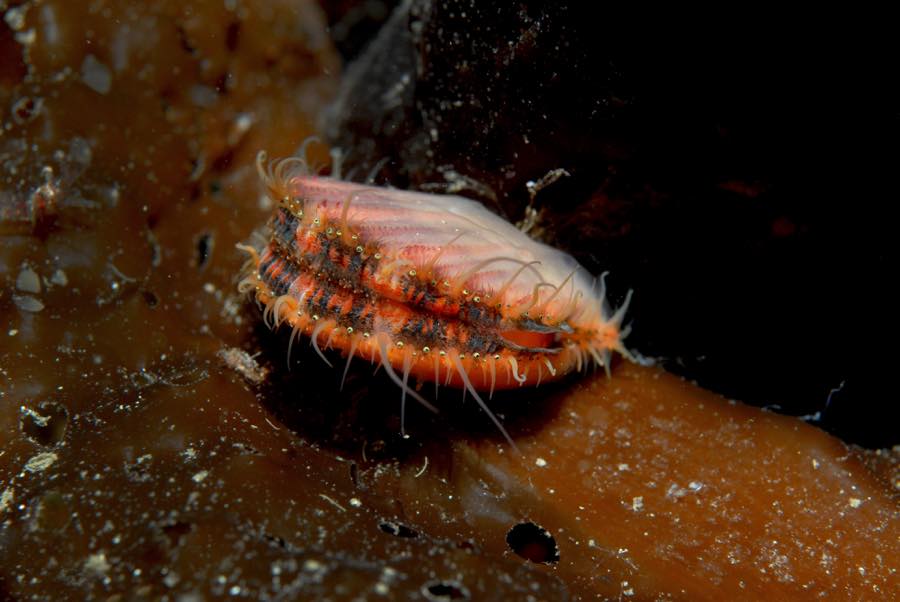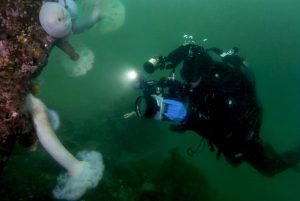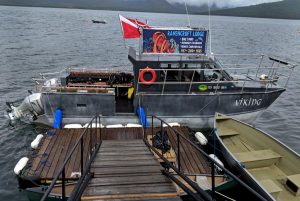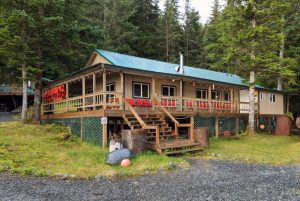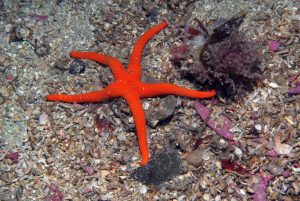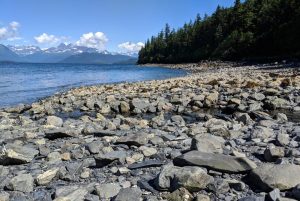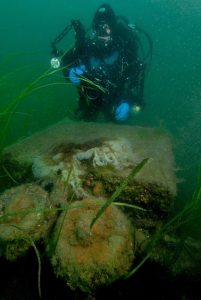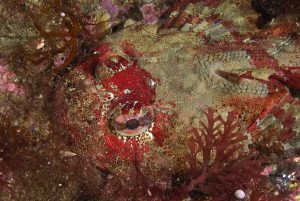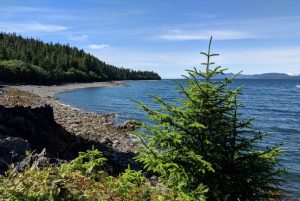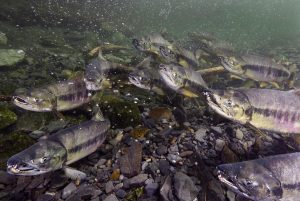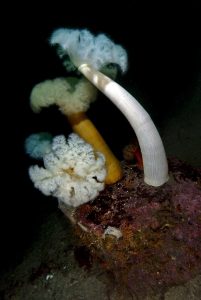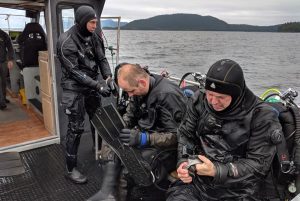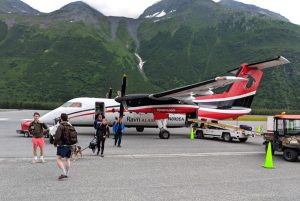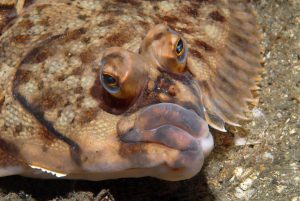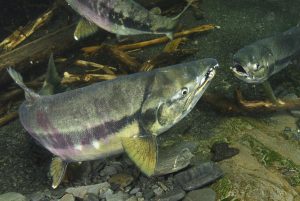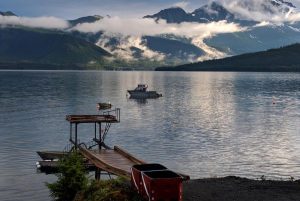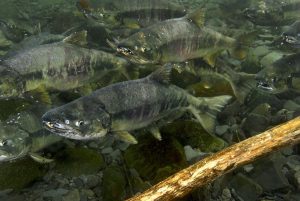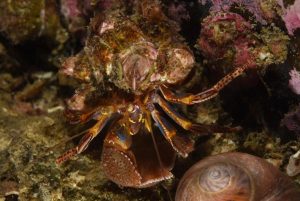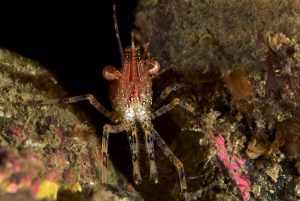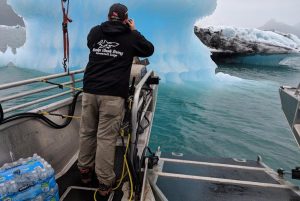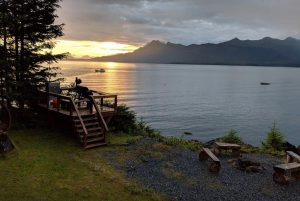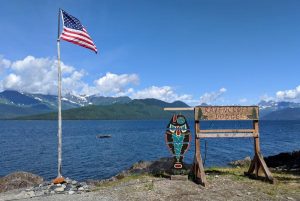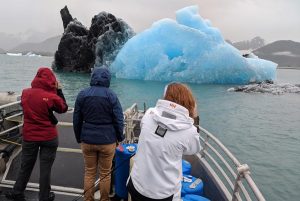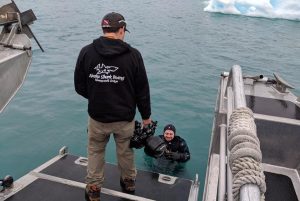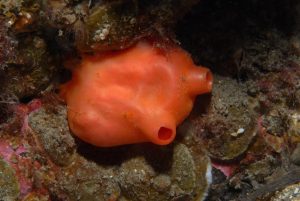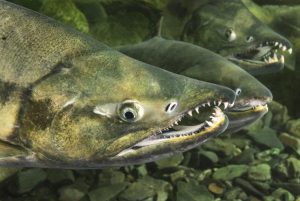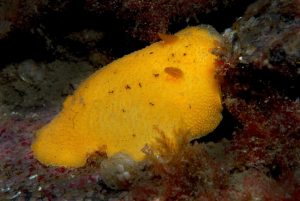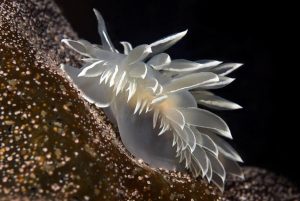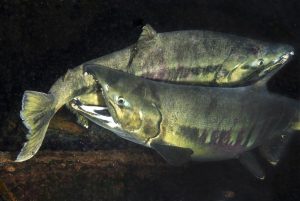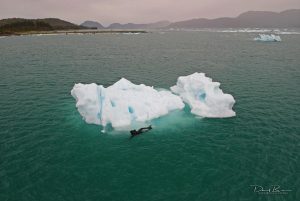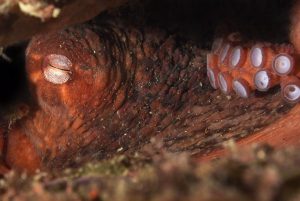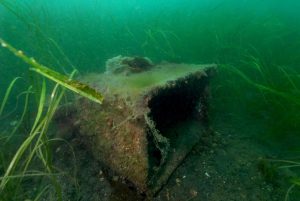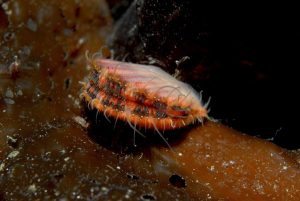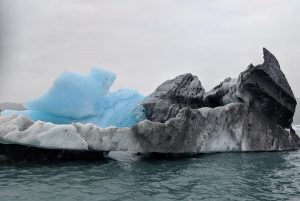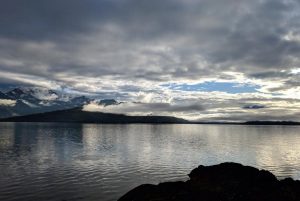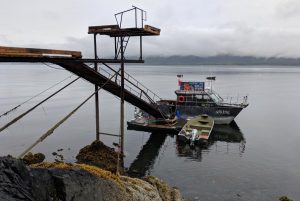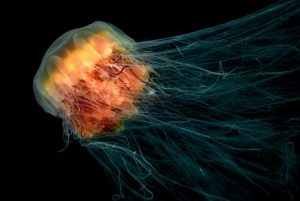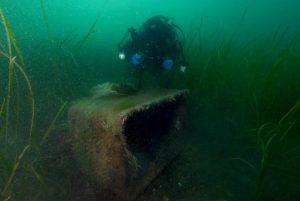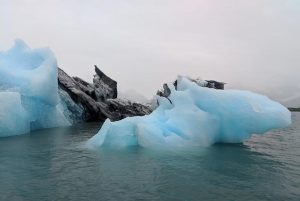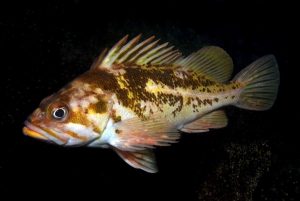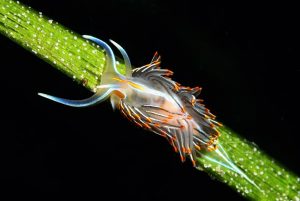“Hey, you guys need a lift?”
Standing outside the Valdez Airport with our pile of dive and photographic gear, with no visible means of transportation in sight, this offer from a friendly stranger named Jeff, who worked at the airport, was music to our ears. We had just arrived after a cross country flight and this was the very start of our Alaska dive adventure. The unsolicited offer to drive us to town was emblematic of the friendliness and willingness to help that we would encounter throughout our time here.
Words & Photos by Michael Salvarezza and Christopher P. Weaver
Our dive expedition began in earnest the next morning after a restful night in a waterfront hotel. We loaded our gear, boarded a transport boat and set out from Valdez Harbor to Fidalgo Bay, some 3-4 hours away. Our objective for the trip was to experience Alaska’s underwater world, immerse ourselves in the Alaska wilderness and possibly find Salmon Sharks in the waters of Prince William Sound.
However, before we even arrived at Ravencroft Lodge, our base of operations for the week, we found ourselves in the ice choked waters near the Columbia Glacier. Icebergs, both small and large, and of varying shapes, sizes and colors, bobbed in the cold waters. Unlike other arctic regions where groups of seals could be seen hauling out on the icebergs, here we were treated to the site of dozens of Otters relaxing atop these floating bits of ice. The urge to snorkel the icebergs became irresistible!
Our journey to the lodge continued, with sightings of Bald Eagles, Stellar Sea Lions and False Killer Whales keeping us and our cameras busy. Eventually, we arrived to a well-appointed wilderness lodge and our attention turned to the dives ahead.
The waters of Fidalgo Bay are somewhat sheltered between two strips of land and some towering mountains, but they are open to the exposed stretches of Prince William Sound and can turn rough quickly. We were fortunate that for our time in the area, the seas were calm. Our first dive was directly in front of the lodge and we were immediately intrigued: A lush garden of seagrass was home to beautifully adorned Opalescent Nudibranchs, small jellies, assorted crabs and a variety of starfish while further out in somewhat deeper water we found brilliantly colored starfish and foot-long sea cucumbers wandering a bed of bull kelp. One of the divers in the group located an oxymoronic small Giant Pacific Octopus hiding in a rocky lair. We didn’t see this individual, but we did come across one on our last dive of the expedition.
Back in the seagrass, we located an old abandoned ore cart, a relic from the past history of copper mineral mining in the area. Ravencroft Lodge is built on a former mining site and, in addition to this submerged cart, there are some artifacts scattered about the grounds of the lodge and a short hike into the forest will take visitors to the site of the original mine. Mining for copper occurred largely in the early parts of the 20thcentury before being abandoned due to a market drop in copper prices.
Before setting our sights on deeper dive sites, we took advantage of favorable tides to explore a glacier-fed river where Salmon begin their migration from the sea upstream to their preferred spawning grounds deeper into the forests.
Here, in only 5 feet of frigid 47-degree water, we battled the fierce rush of tumbling water to remain still and photograph hundreds of Chum and Pink Salmon as they raced by in a desperate push to pass through fallen trees, waterfalls and rocks to journey upstream. Some would dart past us at a frenzied pace, while others could be found resting in the eddies and pools as if to catch their breath before making another push upstream. By the time we hiked back to our skiffs we were all exhausted, excited and gratified to have witnessed one of nature’s miracles.
Dawn comes early to Alaska in the summer months, and the next day we were awake way before breakfast eagerly anticipating our first search for the mysterious Salmon Shark. As we fiddled with our cameras and assembled our gear, we went over the details of what conditions we would be looking for, and how to dive with the skittish sharks. According to the experts at Ravencroft, we need flat calm water to spot the small dorsal fin slicing through the water. Once spotted, we need to find a “player”. This is a shark that’s interested in feeding and not too skittish as to be unapproachable. It can take some time, we were told, and indeed it did. In fact, after several hours of looking, we found none. This pattern would repeat over the next few days. We did see one individual on the surface but we were never able to get in the water with one.
Nature is not predictable: an unusually cold summer could be the reason we did not find Salmon Sharks during our visit. Theories as to why Salmon Sharks frequent these waters and linger on the surface for the summer months focus on water temperature. A warm-blooded shark, they may be rising from deeper, colder water to bask in the warmer surface layers of the sea. The season for spotting them is short, only a few weeks across the months of June and July. Our quest will continue in a future trip with the hope of finally capturing photographs of this elusive creature!
After our search for sharks, we decided to dive some rocky outcroppings nearby. At a site known as “The Magic Garden”, we found carpets of huge Plumose and Metridium Anemones adorning the boulders. In addition, we photographed Black Rockfish and other species of Alaskan bottom fish. The dives sites here generally consist of a rocky sloping terrain until about 70 or 80 feet of depth, when they typically drop off in a vertical wall to depths of 600 feet or more.
We continued our exploration the next day to several previously unexplored sites. It’s always exciting to dive a new location and to see what’s below. We were not disappointed. Our first dive placed us into the relatively clear water with a beautiful bottom topography of rocks and crevices. We found several Lined Nudibranchs, as well as a pair of large Lemon Peel Nudibranchs. These measured the size of a baseball and were strikingly beautiful.
Alaska is known for huge groups of jellyfish, sometimes called a “smack”. Indeed, as we explored the second of our “undiscovered” dive sites, we found ourselves in a soup of Moon Jellies, Lion’s Mane Jellies, and large and fearsome looking Sea Nettles. Protected by a dry suit and dry hood, the only vulnerable spot on our bodies to a sting is the area around our mouth…and of course, that’s where we got stung! Lion’s Mane Jellies feed on Moon Jellies and we watched, transfixed, as a slow-motion pursuit by a Lion’s Mane of a Moon Jelly took place right before our eyes. The Moon Jelly, in this case, evaded capture and swam safely away.
Diving Prince William Sound is very much frontier diving. It is diving done on the timetable and to the wishes of the Alaskan wilderness. Sometimes the Salmon Sharks are there, on occasion they are not. Sometimes, huge smacks of Moon Jellies so thick you can lose sight of your buddy a few feet away show up and sometimes they don’t. The visibility varies, from a few feet to 50 feet, and divers who don’t watch their buoyancy can easily stir up clouds of silt unwittingly. The weather in Alaska plays a big role in what takes place on and under the water. This is the essence of adventure!
As we continued to explore the waters of Prince William Sound, other dive sites led us to encounters with colorful decorator crabs, groups of crinoids and rafts of scallops that danced and flitted away as we approached with our cameras.
Our final dive of the trip brought us face to face with a Red Irish Lord fish lurking menacingly on the bottom awaiting prey. But it was the sight of a Giant Pacific Octopus inside a rocky crevice that made the dive worthwhile. As it peered at us from the safety of its lair, the Octopus seemed to be sizing us up. What were these strange bubble blowing creatures? Are they a danger? The Octopus decided we were…and remained safely inside its rocky home. We decided to respect its wishes, ascend the upline to the dive boat and begin planning our return trip.
Getting There
Visitors should plan to arrive into Anchorage International Airport. From there, it is a five to six-hour drive to Valdez or a short 30-minute flight on RAVN Air, a domestic regional carrier. Note, RAVN Aircraft have small overhead compartments, so travelers may have to check large carryon bags at an additional cost. Divers should plan to arrive in Valdez one day prior to the assigned pickup time. The only access to the lodge is by float plane or by boat transport. A water taxi to the lodge can cost $700, so be sure to be in town in time for the lodge’s arranged pickup.
Diving and Accommodation
Lodging in Valdez can be found at several hotels. We recommend the Best Western for its friendly staff, great service and proximity to the wharf where the boat pickups take place.
Ravencroft Lodge is a fishing and diving lodge located in Fidalgo Bay. This is the only dive operator in the area. Dive safely, because the nearest recompression chamber is in Seattle!
When to go
The only season to dive in Alaska is the short summer, generally June and July.
Currency
US Dollars and major credit cards are accepted at the lodge and in Alaska.
- Author Christopher Weaver photographs the Anemones
- The dive boat
- The Ravencroft Lodger, our base of operations
- A brilliant red starfish
- The rugged coastline of Fidalgo Bay
- An abandoned ore cart is a relic from the copper mines of the past
- A Red Irish Lord is perfectly camouflaged
- The rugged coastline of Fidalgo Bay
- Chum Salmon during their migration upstream to mate
- Plumose Anemones cover many of the boulders at The Magic Garden
- Divers prepare for another dive
- Arriving into Valdez
- The face of a flounder
- Chum Salmon during their migration upstream to mate
- Placid waters of Fidalgo Bay
- Chum Salmon during their migration upstream to mate
- Hermit Crabs scurry around the bottom
- Look into small cervices to find colorful shrimp
- Photographing icebergs near the Columbia Glacier
- Sunset comes late each day in the Alaska summer
- Fidalgo Bay is far removed from civilization
- Photographing icebergs near the Columbia Glacier
- Preparing to snorkel the iceberg
- Tunicates abound in these waters
- Chum Salmon become disfigured as their bodies transform for mating
- A Lemon Peel Nudibranch
- A Lined Nudibranch patrolling the kelp beds
- Chum Salmon during their migration upstream to mate
- Snorkeling an iceberg (Photo by David “Boone” Hodgin)
- A Giant Pacific Octopus warily eyes us from its lair
- An abandoned ore cart is a relic from the copper mines of the past
- Scallops often “fly” away from divers
- A beautiful iceberg from the Columbia Glacier
- The end of a day in Prince William Sound
- The loading ramp to the dive boat
- Lion’s Mane Jellyfish pack a dangerous sting
- An abandoned ore cart is a relic from the copper mines of the past
- Icebergs in the Alaskan summer
- Rockfish and other species inhabit these waters
- An Opalescent Nudibranch on the seagrass

